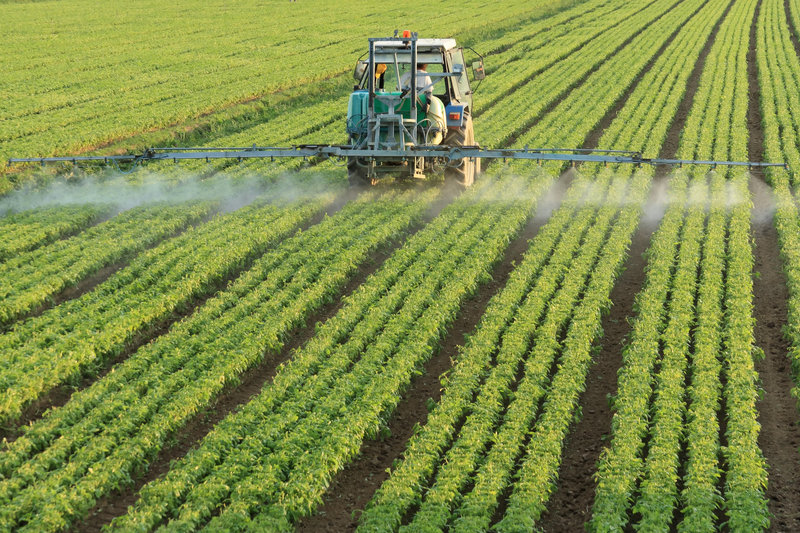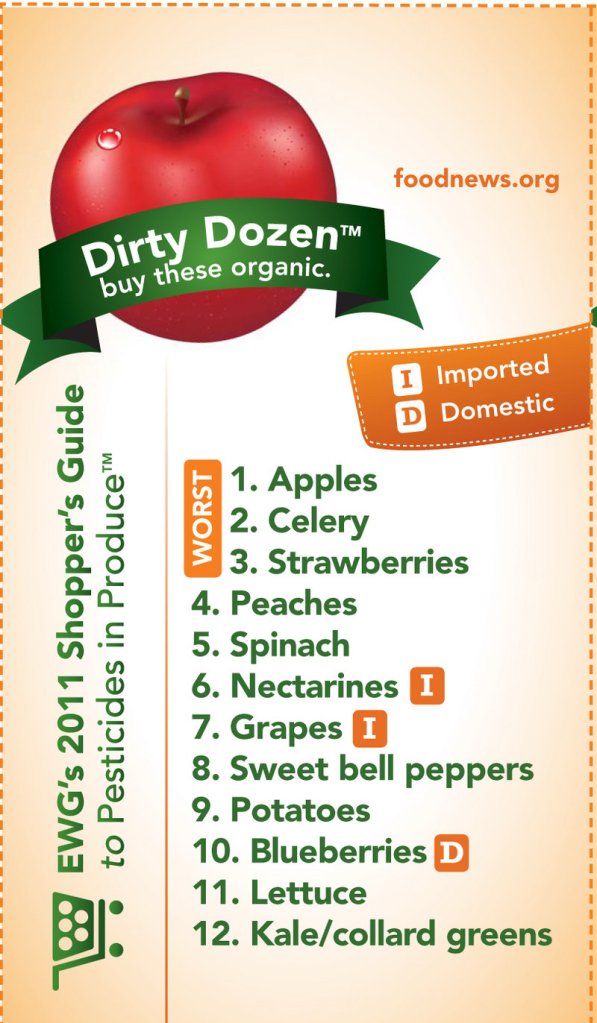When Sally Struever was pregnant with her 9-month-old son, Jasper Eiermann, she made an effort to avoid the plastic chemical BPA and to eat food free of pesticides. An avid gardener, she tends two organic garden plots, preserves many of the vegetables for winter, and cooks the majority of her food from scratch, avoiding packaged and processed foods.
Her pediatrician even shared concerns with her that peanut allergies may be tied to the large quantities of pesticides applied to the legumes.
“Babies are so tiny, even small doses of things can have a big effect,” said Struever, who lives in Portland with her husband, Peter Eiermann. “It just made sense to me to avoid pesticides as much as possible.”
A growing body of research is backing up Struever’s concerns. A study published in the June issue of the journal Pediatrics looked at the connection between prenatal pesticide exposure and a child’s size at birth. By measuring pesticide residues in umbilical cord blood, the researchers found a link between prenatal pesticide exposure and babies with lower birth weights, shorter birth lengths and smaller head circumferences.
“The chemicals included in the present study are known to be environmental endocrine disrupters with the capacity to bind intracellular estrogen/androgen receptors and to alter levels of circulating thyroid hormones during pregnancy,” the researchers wrote.
A number of past studies have revealed similar associations.
For instance, last year Pediatrics published a study that found children with higher concentrations of pesticide residues in their urine “were more likely to be diagnosed as having ADHD.”
“It seems like, every other week almost, there’s a major study implicating a class of pesticides in significant human disease or harm to the environment or wildlife,” said Heather Spalding, associate director of the Maine Organic Farmers and Gardeners Association. “I do think it is raising concerns among the general population and expectant mothers in particular … but what is unfortunate is that it doesn’t seem to make a difference with policymakers. It shows the influence the chemical industry has.”
During the latest legislative session, Maine lawmakers rolled back the public’s access to information about pesticide applications by killing the state’s pesticide notification registry. A bid to ban the cosmetic use of pesticides on school grounds failed in the same legislative session.
Officials from the American Chemistry Council declined to comment for this story. CropLife America, another trade organization that represents pesticide manufacturers, did not respond to a request for comment before deadline.
MAINE JOINS NATIONAL STUDY
Medical researchers in Maine are collecting data on pesticide exposure in local kids as part of the National Children’s Study. Yarmouth pediatrician Laura Blaisdell is the lead physician heading up the study in Maine.
“Because there’s such variability in pesticide compounds and exposure, it’s hard to create robust, data-driven studies,” Blaisdell said. The National Children’s Study, which will follow children until the age of 21, will overcome these challenges and draw conclusions about chronic, low-level exposure to these chemicals, as well as many other health concerns.
The U.S. Environmental Protection Agency reports that more than 1 billion pounds of pesticides are sprayed in the U.S. each year. The agency’s records show these chemicals result in between 10,000 and 20,000 people treated for pesticide poisoning annually. Most of these cases involve agricultural employees. Reports from numerous farmworker advocacy groups point to underreporting of pesticide poisonings by farm workers because of improper diagnoses, lack of access to doctors or the inability to pay for doctor visits, among other causes.
While California clocks in as the most pesticide-drenched state, Maine is no safe haven from these chemicals.
According to the Maine Board of Pesticides Control, which regulates pesticide usage, more than 6 million pounds of pesticides were applied on residential properties in the state in 2007, which represents a dramatic increase from 1995, when only 800,000 pounds of pesticides were applied around homes.
In the face of this unhealthy trend, the Toxics Action Center, an environmental advocacy group, has worked with a number of Maine towns, including Scarborough, Rockport and Camden, to pass ordinances banning the use of synthetic pesticides on town-owned land.
“All of these efforts are driven by people’s concern for kids’ health,” said Meredith Small, executive director of the Toxics Action Center.
The Maine Board of Pesticides Control does not have similar figures available for agricultural pesticide usage. However, in 2000, the most recent year for which the board could supply data, agricultural and forestry operations in Maine applied more than 3 million pounds of pesticides.
“The total sales of (pesticide) products in agriculture has been trending downward or staying flat,” said Gary Fish, pesticide programs manager at the Maine Board of Pesticides Control. “The only crop that has been trending upwards (in pesticide usage) is blueberries.”
When Blaisdell is asked by pregnant patients what can be done to reduce exposure to pesticides, she advises them to take a closer look at their food.
“In my own practice, I highlight that there is uncertainty as far as (the effects) of long-term exposure,” Blaisdell said. “But I think it makes sense, in terms of your grandmother’s sense, when you can, to know where your food comes from. Buy local and ask what pesticides are used. I do suggest organic foods for some of those foods we use on a daily basis.”
And don’t expect careful washing to protect you from pesticides sprayed on your foods. The Environmental Working Group found in a 1994 study that pesticide residues were still present even after fruits and vegetables had been washed and peeled, with apples, peaches and celery being the worst offenders.
People also consume these synthetic contaminants in drinking water. The U.S. Geological Survey reports that 90 percent of streams and 50 percent of wells in agricultural and urban watersheds contain pesticides. Filtration systems can help remove these toxins.
DON’T SPRAY AT HOME
The easiest way to cut your family’s pesticide exposure is to not spray the chemicals on your lawn or around your home.
As Blaisdell recommends, seeking out cleaner food is another way to lessen your exposure. Even though organic produce can be contaminated by pesticide residue — either from nearby conventionally grown crops or from pesticides approved for use on certified organic crops — eating organically grown food remains a proven way to decrease exposure to these chemicals.
“We can significantly reduce the burden of pesticides in our bodies by switching to an organic diet,” Spalding said.
In 2002, researchers at the University of Washington compared the urine from children who ate organic food with the urine from children who ate conventionally treated food. The results showed that children who consumed conventional food had six times the amount of pesticide residues in their urine.
Because organic food generally costs more to buy than conventionally grown and raised food, another option is to do what Struever does and grow some of your own food organically. Then there will be no mystery as to what you’re putting in your mouth or your unborn baby’s bloodstream.
Staff Writer Avery Yale Kamila can be contacted at 791-6297 or at: akamila@pressherald.com
Twitter: AveryYaleKamila
Send questions/comments to the editors.



